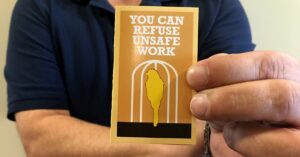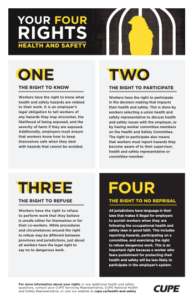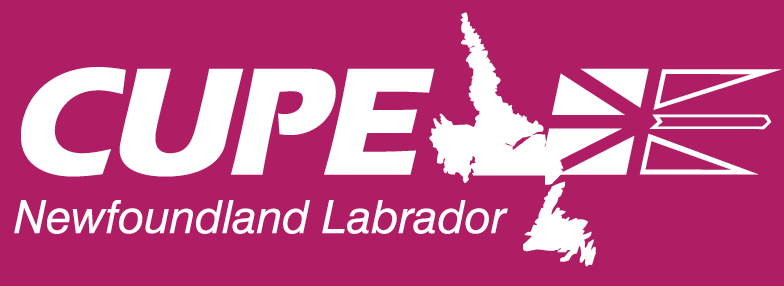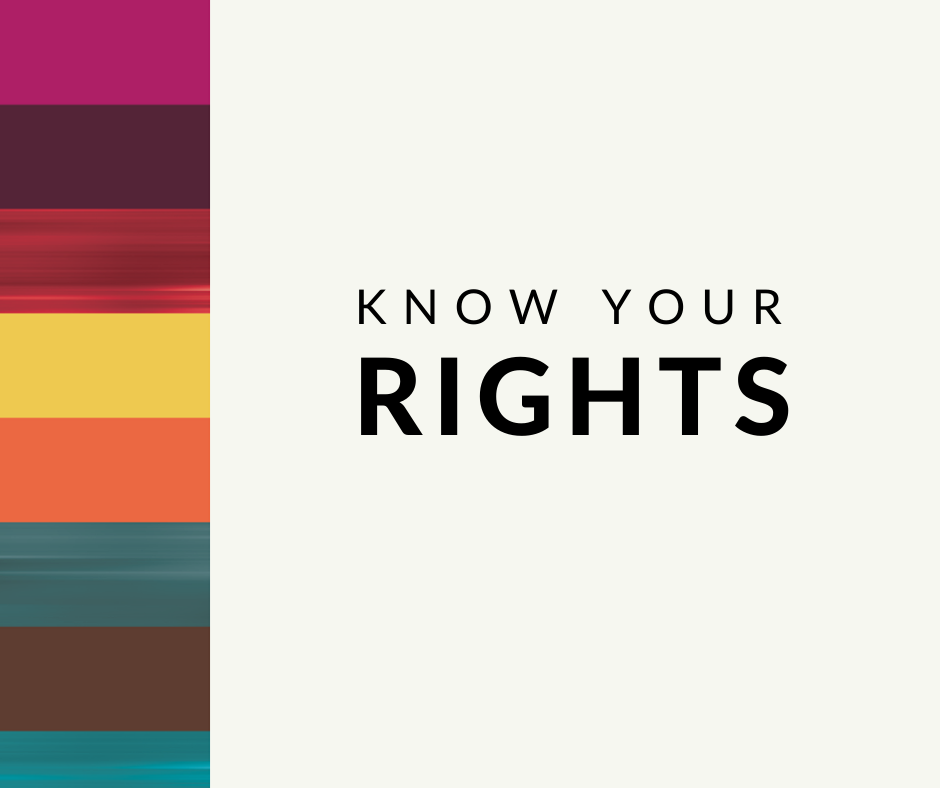 Health and safety is an essential part of our union’s work. CUPE members face a wide range of hazards. We provide tools, resources and training to help members stay healthy and safe and to encourage activism. We also conduct research on current and emerging health and safety hazards.
Health and safety is an essential part of our union’s work. CUPE members face a wide range of hazards. We provide tools, resources and training to help members stay healthy and safe and to encourage activism. We also conduct research on current and emerging health and safety hazards.
[button shape=”rounded” size=”large” float=”none” href=”https://nl.cupe.ca/covid-19/” title=”More H&S Resources on COVID-19″ info=”none” info_place=”top” info_trigger=”hover”]More H&S Resources on COVID-19[/button]
[gap size=”1.313em”]
What to do if you have a health and safety problem
1. Tell your supervisor. In all Canadian jurisdictions, the respective occupational health and safety acts state that it is the primary duty of the employer to provide workers with a safe workplace. Your supervisor is the first link in a chain that goes to the top, so they need to be told about the hazards and dangers you discover in the workplace.
An important note: no job is worth dying over. In all jurisdictions, workers have the legal right to refuse to perform a task that they feel will cause harm to themselves or others. If you feel the task is too dangerous, tell your supervisor that “you are refusing to do the task because you feel it is too dangerous.” This will set into motion a series of steps that will lead to the hazard being removed, or an investigation with your local health and safety representative or a committee member.
[gap size=”1.313em”]
[button shape=”rounded” size=”x-large” float=”none” href=”https://nl.cupe.ca/2019/04/15/know-your-rights/” info=”none” info_place=”top” info_trigger=”hover”]Poster: Your Four Rights[/button]
[gap size=”1.313em”]
For more information on the right to refuse unsafe work, check out our Legal summary of the right to refuse unsafe work in Canada.
2. Make sure your co-workers, your union health and safety committee, and your local executive know about the hazard. It is the law that your employer must tell all employees about the hazards of the workplace, however not all do. To help protect each other, tell co-workers, especially those who will be potentially exposed to the hazard.
 3. Make sure your joint health and safety committee knows about the problem. All hazards should be reported to members of your JH&S committee or health and safety representative, but this is a particularly important step if your supervisor does not take action to fix the hazard. A well-functioning committee will address problems brought to its agenda, as well as conduct regular health and safety inspections to make sure that working conditions are safe. For more information on health and safety committees check out cupe.ca/health-and-safety.
3. Make sure your joint health and safety committee knows about the problem. All hazards should be reported to members of your JH&S committee or health and safety representative, but this is a particularly important step if your supervisor does not take action to fix the hazard. A well-functioning committee will address problems brought to its agenda, as well as conduct regular health and safety inspections to make sure that working conditions are safe. For more information on health and safety committees check out cupe.ca/health-and-safety.
4. Contact your CUPE staff representative. All CUPE locals have access to a national staff representative. If you have a health and safety issue that you cannot get rectified, contact the staff representative assigned to your local, who can help or refer you to the proper person for assistance.
5. Some regions have health & safety representatives that are experts in health and safety. While you should start by contacting your staff rep, you can also contact the regional health & safety representative if you have any health and safety related questions.
[gap size=”1.313em”]
[button shape=”rounded” size=”large” float=”none” href=”https://www.facebook.com/cupenlhealthandsafety” title=”Click here to join the CUPE NL Health & Safety Facebook group” target=”blank” info=”none” info_place=”top” info_trigger=”hover”]Join the CUPE NL Health & Safety Facebook group[/button]

